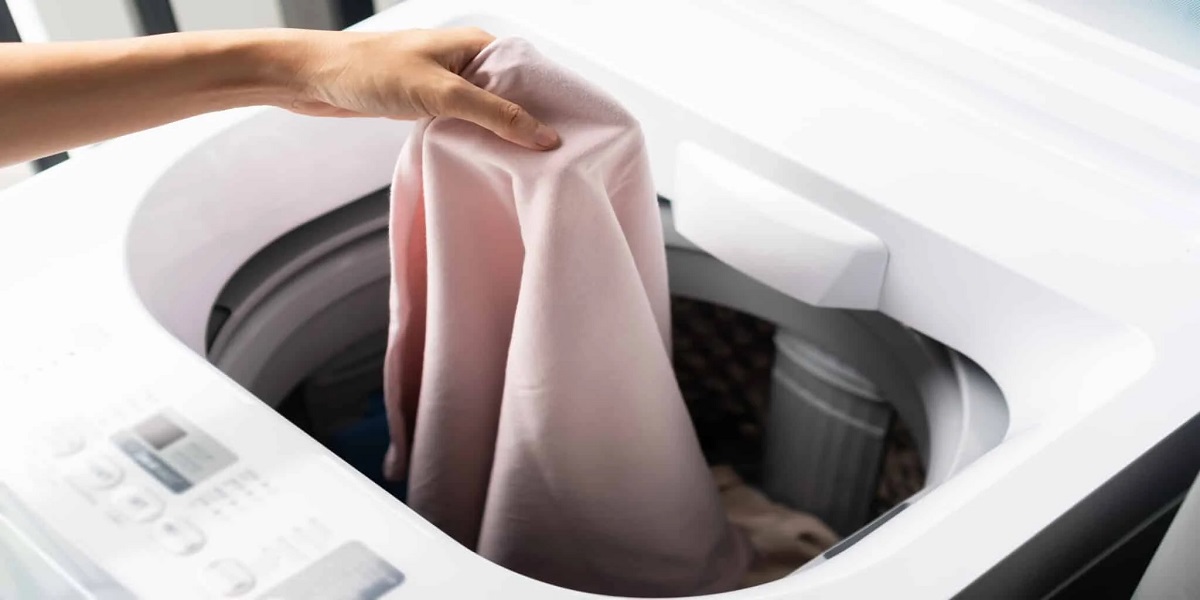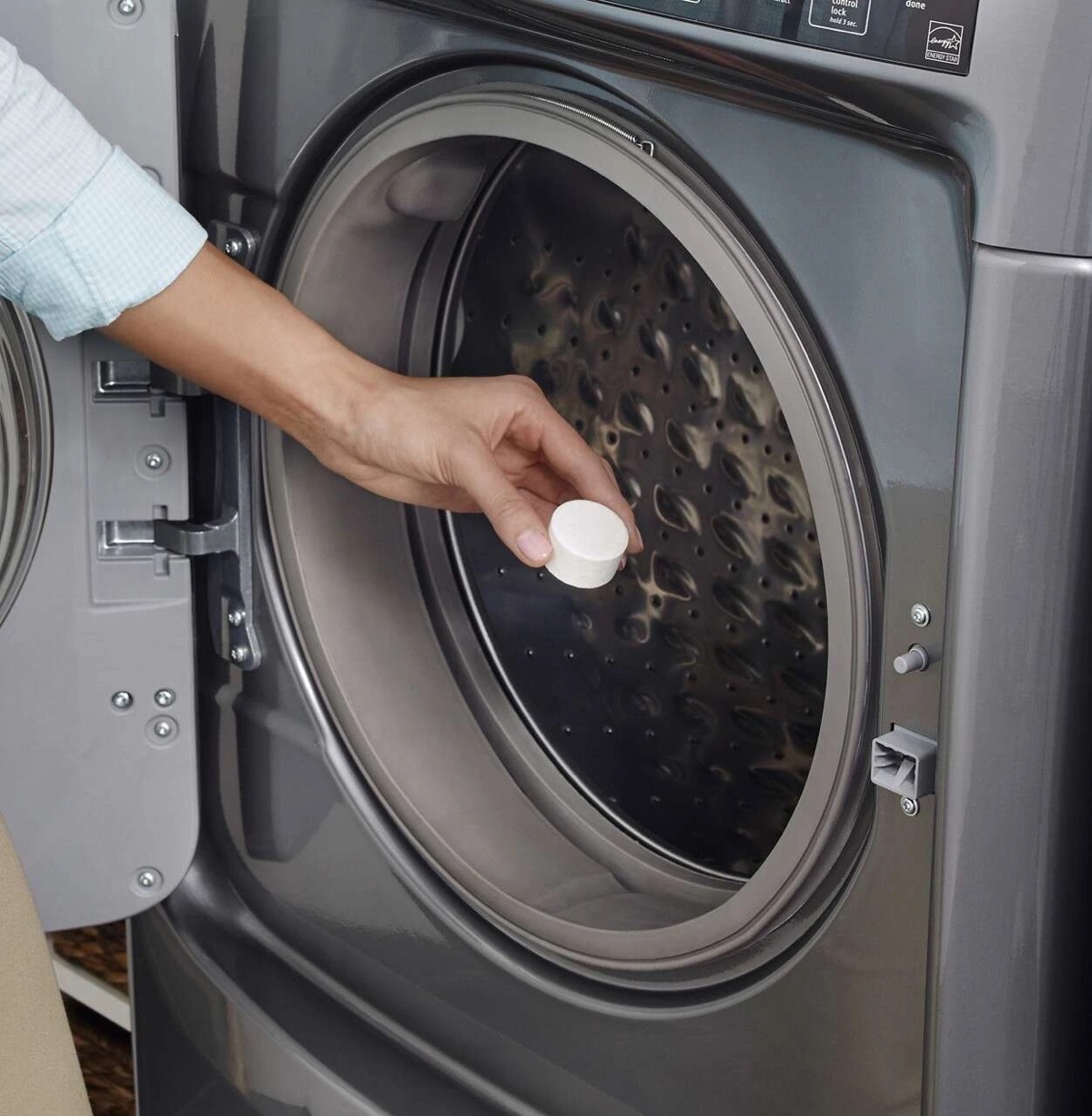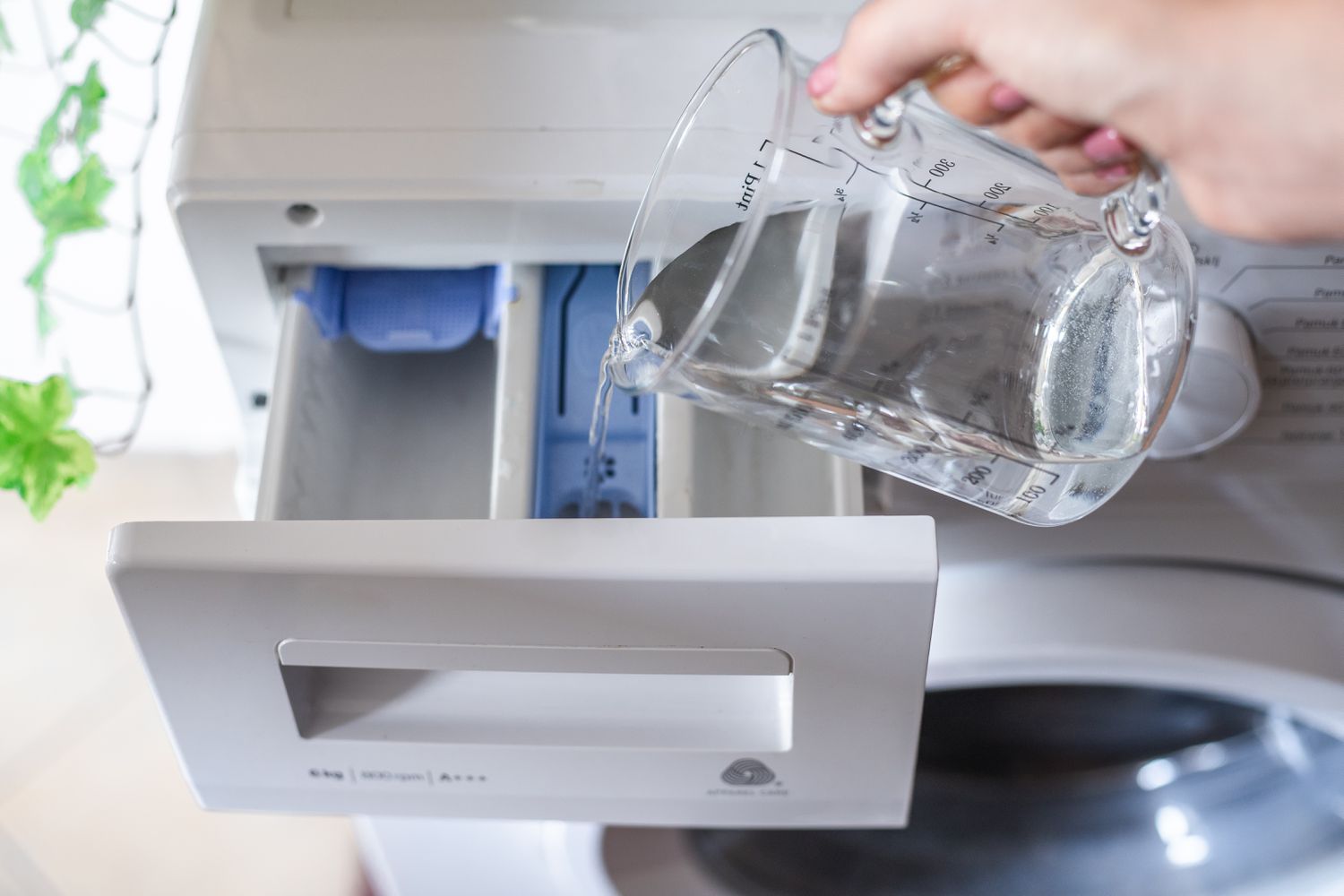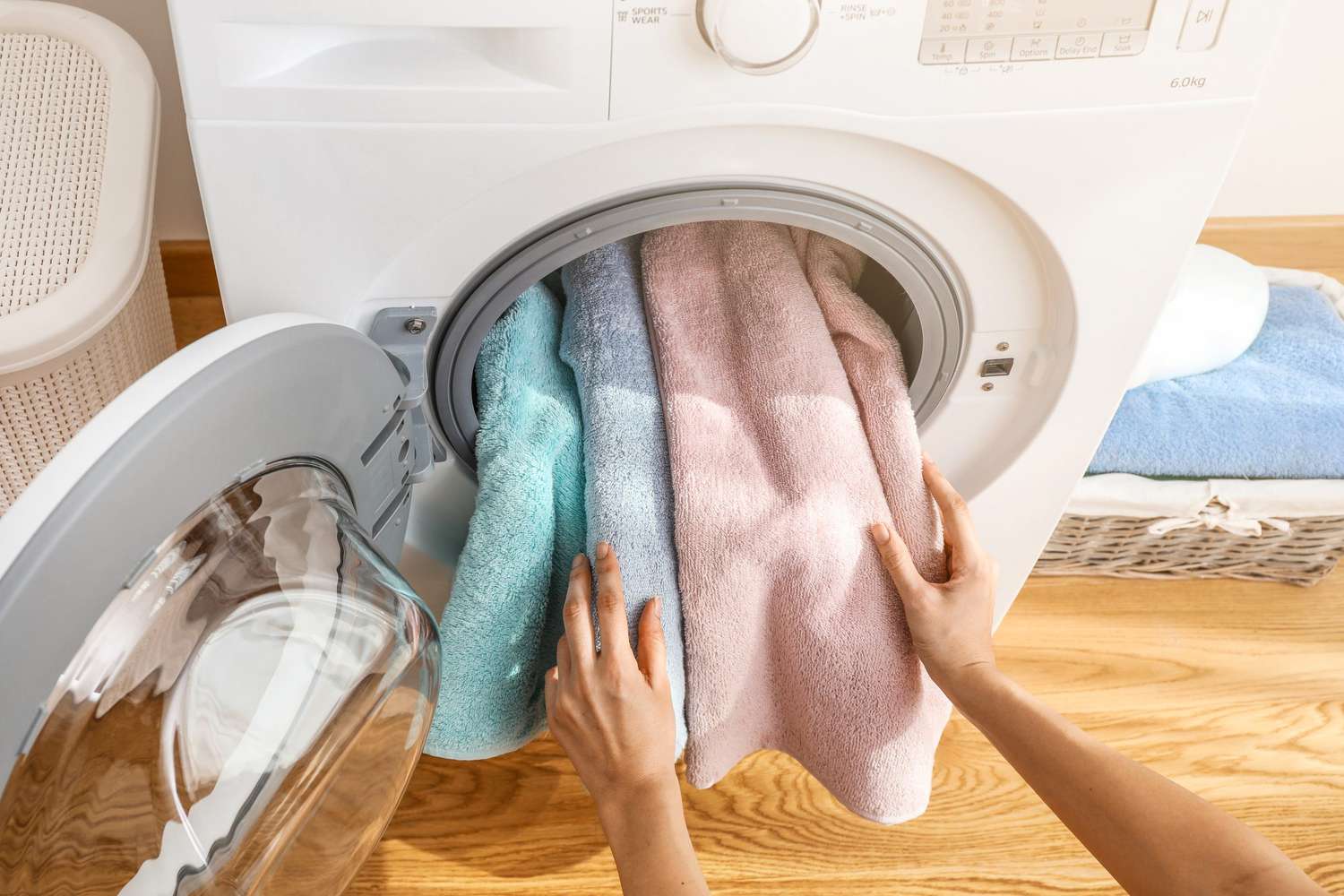

Articles
How Full Can You Fill Front Load Washer
Modified: May 6, 2024
Discover top articles on how to efficiently fill a front load washer and maximize its capacity for the best laundry results.
(Many of the links in this article redirect to a specific reviewed product. Your purchase of these products through affiliate links helps to generate commission for Storables.com, at no extra cost. Learn more)
Introduction
Front load washers have become increasingly popular in households due to their efficiency and ability to handle large loads of laundry. But how do you maximize the capacity of your front load washer to get the most out of each cycle?
In this article, we will explore the factors that affect the load size of a front load washer and provide recommendations on how to optimize the filling process. By understanding the capabilities and limitations of your washer, you can ensure that you are getting the most value out of every wash cycle and achieving clean and fresh results.
So, let’s dive in and learn how full you can actually fill your front load washer!
Key Takeaways:
- Maximize your front load washer’s capacity by sorting clothes, distributing them evenly, and avoiding overstuffing. Follow manufacturer’s guidelines and maintain the machine for optimal performance.
- Avoid overloading your front load washer to prevent poor cleaning, excessive wear, and potential damage. Follow recommended load sizes, leave room for movement, and consider multiple smaller loads for better results.
Understanding Front Load Washers
Front load washers are designed to be more efficient and gentle on your clothes compared to traditional top load washers. They use a tumbling action to agitate the clothes, reducing wear and tear while maintaining effective cleaning. Understanding how front load washers work is key to understanding their capacity.
Unlike top load washers, which typically have a center agitator, front load washers have a drum that rotates horizontally. This design allows for larger capacities as there is no agitator taking up space in the center. The drum is positioned horizontally, allowing clothes to be lifted and dropped through the water repeatedly.
Front load washers also have a higher spin speed during the final cycle, which helps to extract more water from the clothes. This results in faster drying times and reduced energy consumption when using a dryer.
Front load washers often have a visible seal around the door, called a gasket, which helps to prevent water leakage. It’s important to regularly clean and maintain the gasket to prevent mold and mildew buildup.
Understanding these features of front load washers is crucial when it comes to maximizing their capacity. Let’s now explore the factors that can affect how much you can fill your front load washer.
Factors Affecting Capacity
While front load washers boast larger capacities compared to top load washers, there are still factors that can affect how much you can fill your machine. Here are some important factors to consider:
- Size of the Drum: The size of the drum determines the maximum capacity of the washer. Most front load washers come in various sizes, ranging from 3.5 to 5.0 cubic feet. Check the specifications of your washer to determine its capacity.
- Type of Fabric: Different types of fabric have different space requirements. Bulky items like towels and bedding take up more space compared to lightweight items like t-shirts and socks. Consider the type of fabric you are washing when determining how full to fill your washer.
- Level of Soiling: Heavily soiled clothes may require more space to ensure proper agitation and cleaning. If your clothes are heavily stained or dirty, it’s best to fill your washer to a slightly lower capacity to allow for adequate cleaning.
- Detergent and Water Usage: The amount of detergent and water you use can affect the capacity of your front load washer. Follow the manufacturer’s instructions for detergent dosage and water level to ensure optimal performance.
- Proper Loading Technique: How you load your clothes into the washer can also impact capacity. Avoid tightly packing the drum as this can prevent proper water circulation and reduce cleaning effectiveness. Instead, loosely distribute the clothes to allow for proper movement and agitation.
By considering these factors, you can determine how much you can fill your front load washer to achieve optimal cleaning results. However, it’s important to note that overloading your washer can lead to subpar cleaning and potential damage to the machine. Let’s explore some recommendations for maximizing your load size without overloading.
Maximize Load Size
To maximize the load size of your front load washer without compromising cleaning efficiency, follow these tips:
- Sort Clothes Carefully: Sort your laundry by fabric type and color. By washing similar fabrics together, you can optimize the load size while ensuring that each type of fabric receives the appropriate care.
- Fill the Washer to the Recommended Capacity: Refer to your washer’s user manual or specifications to determine the recommended capacity. Avoid exceeding this capacity to prevent overloading and potential damage to the machine.
- Distribute Clothes Evenly: Distribute the clothes as evenly as possible in the drum. This allows for better balance and efficient water distribution during the wash cycle.
- Use the Space Wisely: Strategically place larger items like towels and bedding around the edges of the drum, leaving the center for smaller items. This helps maximize the use of space and ensures proper agitation.
- Avoid Overstuffing: While it can be tempting to pack as much as possible into the washer, overstuffing can hinder the cleaning process. Leave a little room for the clothes to move and agitate freely.
- Consider Half Loads: For smaller loads, consider using the half-load or eco-friendly settings on your washer. These options optimize water and energy usage for smaller loads, ensuring efficiency.
By following these tips, you can make the most of the capacity of your front load washer without sacrificing the cleanliness of your laundry. However, it’s important to understand the limitations and recommendations provided by the manufacturer to ensure the longevity and optimal performance of your machine. Let’s now look at some recommendations for avoiding overloading your washer.
Make sure to leave some space at the top of the drum when loading a front load washer to allow for proper water circulation and cleaning. Overfilling can lead to poor cleaning results and potential damage to the machine.
Avoid Overloading
While maximizing the load size of your front load washer is important, it’s equally important to avoid overloading the machine. Overloading can lead to several issues, including poor cleaning performance, excessive wear and tear on the machine, and potential damage.
Here are some key points to keep in mind to avoid overloading your front load washer:
- Follow the Manufacturer’s Guidelines: Refer to the user manual or specifications provided by the manufacturer to determine the recommended load size for your specific model. Following these guidelines ensures optimal performance and prevents overloading.
- Leave Room for Movement: It’s crucial to leave enough space in the drum for the clothes to move freely during the wash cycle. Overstuffing the drum can hinder proper agitation and cleaning, resulting in subpar results.
- Watch for Signs of Overloading: Pay attention to warning signs such as excessive noise, uneven spinning, or clothes not properly getting clean. These signs may indicate that you are overloading the washer, and adjustments should be made to the load size.
- Consider Multiple Loads: If you have a large amount of laundry to wash, it’s better to divide it into multiple smaller loads rather than cramming it all into one cycle. This allows for better cleaning and prolongs the lifespan of your machine.
- Maintain a Balance: A properly balanced load is essential for the efficient operation of a front load washer. Unevenly distributed clothes can lead to excessive vibration and potential damage to the machine. Take the time to evenly distribute the clothes in the drum.
By following these guidelines, you can avoid overloading your front load washer and ensure optimal cleaning performance. Remember that it’s better to err on the side of caution and slightly underfill the machine rather than risk overloading it.
Now that we have covered the factors that affect capacity and provided recommendations for maximizing load size and avoiding overloading, let’s summarize the important points discussed.
Read more: How To Load A Top Load Washer
Recommendations for Optimal Filling
To achieve optimal filling of your front load washer, consider the following recommendations:
- Know Your Washer’s Capacity: Familiarize yourself with the capacity of your specific front load washer. This information can usually be found in the user manual or specifications provided by the manufacturer. It will help you determine the maximum load size.
- Sort Clothes and Load Carefully: Sort your laundry by fabric type and color, and distribute them evenly in the drum. This allows for proper water circulation and efficient cleaning. Place larger items around the edges and leave the center for smaller items.
- Avoid Overloading: Follow the manufacturer’s guidelines and resist the temptation to overload the washer. Overstuffing can result in poor cleaning performance and potential damage to the machine.
- Use the Recommended Level of Detergent and Water: Overusing detergent or water can affect the efficiency of your front load washer. Always refer to the manufacturer’s recommendations for the appropriate levels of detergent and water.
- Consider Half Loads: When you have smaller loads of laundry, utilizing the half-load or eco-friendly settings on your washer can save water and energy without compromising cleanliness.
- Maintain the Machine: Regularly clean the gasket, as well as the drum and detergent dispenser, to prevent mold and mildew buildup. This ensures optimal performance and prolongs the lifespan of your washer.
By following these recommendations, you can optimize the filling of your front load washer and achieve clean and fresh laundry results. Remember to always consider the capacity of your machine, the type of fabric being washed, and the level of soiling when determining how full to fill your washer.
Finally, keep in mind that while front load washers offer larger capacities compared to top load washers, it’s important to strike a balance between maximizing load size and ensuring effective cleaning. Overloading the washer can lead to subpar results and potential damage. With proper care and attention, you can make the most of your front load washer’s capacity and enjoy clean and fresh laundry every time.
Now that you have a better understanding of how full you can fill your front load washer, it’s time to put this knowledge into practice and make the most of your laundry routine!
Conclusion
Understanding how full to fill your front load washer is essential for achieving optimal cleaning results while maintaining the longevity of your machine. By considering factors such as drum size, fabric type, soiling level, detergent usage, and loading technique, you can maximize the load size without overloading the washer.
Remember to always follow the manufacturer’s guidelines and recommendations for your specific front load washer. This includes knowing the capacity of your machine, sorting and loading clothes carefully, and avoiding overstuffing. Distributing clothes evenly, using the recommended amount of detergent and water, and considering half loads are also important factors to consider for optimal filling.
With proper care and attention, you can make the most of your front load washer’s capacity and achieve clean and fresh laundry every time. Regular maintenance, such as cleaning the gasket and drum, will help prevent mold and mildew buildup and ensure optimal performance.
By implementing these recommendations, you can save time, energy, and water while enjoying efficient and effective cleaning. Remember that it’s better to slightly underfill your washer than to risk overloading it, as overloading can lead to subpar cleaning and potential damage to the machine.
Now that you have a better understanding of how to fill your front load washer, it’s time to put this knowledge into practice. Maximize your load size, but always keep in mind the limitations and recommendations provided by the manufacturer. By doing so, you can enjoy clean and fresh laundry with every wash cycle, making your laundry routine a breeze.
Curious about the perfect amount of clothing for each laundry session? Our guide on washer capacity will help you strike the right balance. Plus, maintaining your laundry appliances is crucial for their longevity and performance. Learn effective methods for keeping both washer and dryer in top shape. Don't miss out on these valuable insights that will surely make your laundry routine more efficient!
Frequently Asked Questions about How Full Can You Fill Front Load Washer
Was this page helpful?
At Storables.com, we guarantee accurate and reliable information. Our content, validated by Expert Board Contributors, is crafted following stringent Editorial Policies. We're committed to providing you with well-researched, expert-backed insights for all your informational needs.















0 thoughts on “How Full Can You Fill Front Load Washer”